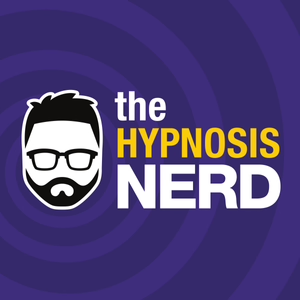
This episode of The Hypnosis Nerd takes a closer look at The Results-Based Hypnosis Manifesto, a statement of principles that Luke wrote when he opened his hypnosis practice in 2006. The purpose of this manifesto is to clearly state what he believes good hypnosis should entail, and it is these principles upon which Luke has built his practise. This article summarizes the discussion.
It is important to note that hypnotherapy is not a homogeneous practise. Luke strives to focus on results based in the present and future opposed to exploration and discovery of a client’s past. Results-based hypnosis cuts through unprovable methods of hypnotherapy and provides a practical framework for helping clients get results with hypnosis.
Point One: Reality trumps theory. Reality is constantly fluid and changing such that there is no one framework for every client, even if they present similar issues such as smoking cessation. This is because hypnosis is a subjective experience, and there is no universal solution for everyone. In this way, it is important to be flexible and change with the client as they encounter change. The art is to see the client in front of you while being able to adapt to any feedback as necessary.
Point Two: Your experiences after hypnosis are more important than your experiences during hypnosis. More specifically, how a client feels between hypnosis sessions and after their sessions with Luke are over. Expect to be pushed out of your comfort zone with results-based hypnosis as it challenges you to become a better and happier person. It is crucial for a client to be able to temporarily suspend their analytical mind in order for them to internalize what is being suggested while they are in hypnosis. However, relatable and accurate ideas must be suggested in order for real change to occur.
Luke’s aim is to give clients concentrated positivity and clearer thinking that is validated in the external world. Moreover, he no longer believes that is it necessary for the client to face difficult memories to experience change; it is possible for the client to receive benefits from hypnotherapy without digging into their past or closely examining their problems. This way, it is easier for the client to remain relaxed throughout the entire session. Luke used to first attempt to unravel a clients problem before delivering solutions, but today he wants clients to recognize that the truth is better than what their fears tell them. That we are still safe despite all of our fears.
Point Three: The hypnotist’s job is to help you get from point A to point B and it’s up to you, the client, to define those points. For this third point, Luke uses Uber as an analogy. He needs to first know the pick up as well as the end point. Like any credible Uber driver, Luke must look out for obstacles and detours to be able to efficiently navigate through arising challenges in order to reach the destination safely. While this might include occasionally taking a detour, he always keeps the clients end point in mind.
Point Four: The hypnotists plans are only useful until the clients plans thwart them (but that’s part of the process). This part of the Manifesto explains why hypnotherapists who follow a script will not be able to adapt to ongoing circumstances with a client. It is best to be able to respond immediately and effectively without a pre-planned script because there is no “one size fits all” program. It is best to extract a variety of knowledge from a number of different schools, organizations and teachers for a hypnotist to develop better methods of thinking. If a client has no models for healthy thinking or behaviors, it is Luke’s job to give them that extra layer of thinking. Occasionally, he might have to change up the “route”, but that doesn’t prevent him from getting to the clients destination. This is why it is important to be flexible in order to adapt to the changes the client makes. Continual feedback from the client is also critical for a hypnosis session to be successful.
Point Five: Being a hypnosis client shouldn’t require a leap of faith. Luke does not believe in putting clients in a fantasy world of visualization in order for them to feel better; much of his job is to point out truths that are reassuring, comforting, inspiring and motivating. By truths, we are referring to realities a person can see over and over again in the external world which apply universally to all human beings. Hypnosis boils down to an opening of the clients mind while the practitioner effectively communicates a number of better ideas than the client thinks when they first walk in. The implementation of better ideas and attitudes is what causes change to occur.
Point Six: Practitioners succeed by being more fle...
03/10/20 • 45 min
Generate a badge
Get a badge for your website that links back to this episode
<a href="https://goodpods.com/podcasts/the-hypnosis-nerd-296556/results-based-hypnosis-revisited-the-hypnosis-nerd-ep-2-39429952"> <img src="https://storage.googleapis.com/goodpods-images-bucket/badges/generic-badge-1.svg" alt="listen to results-based hypnosis revisited (the hypnosis nerd, ep. 2) on goodpods" style="width: 225px" /> </a>
Copy